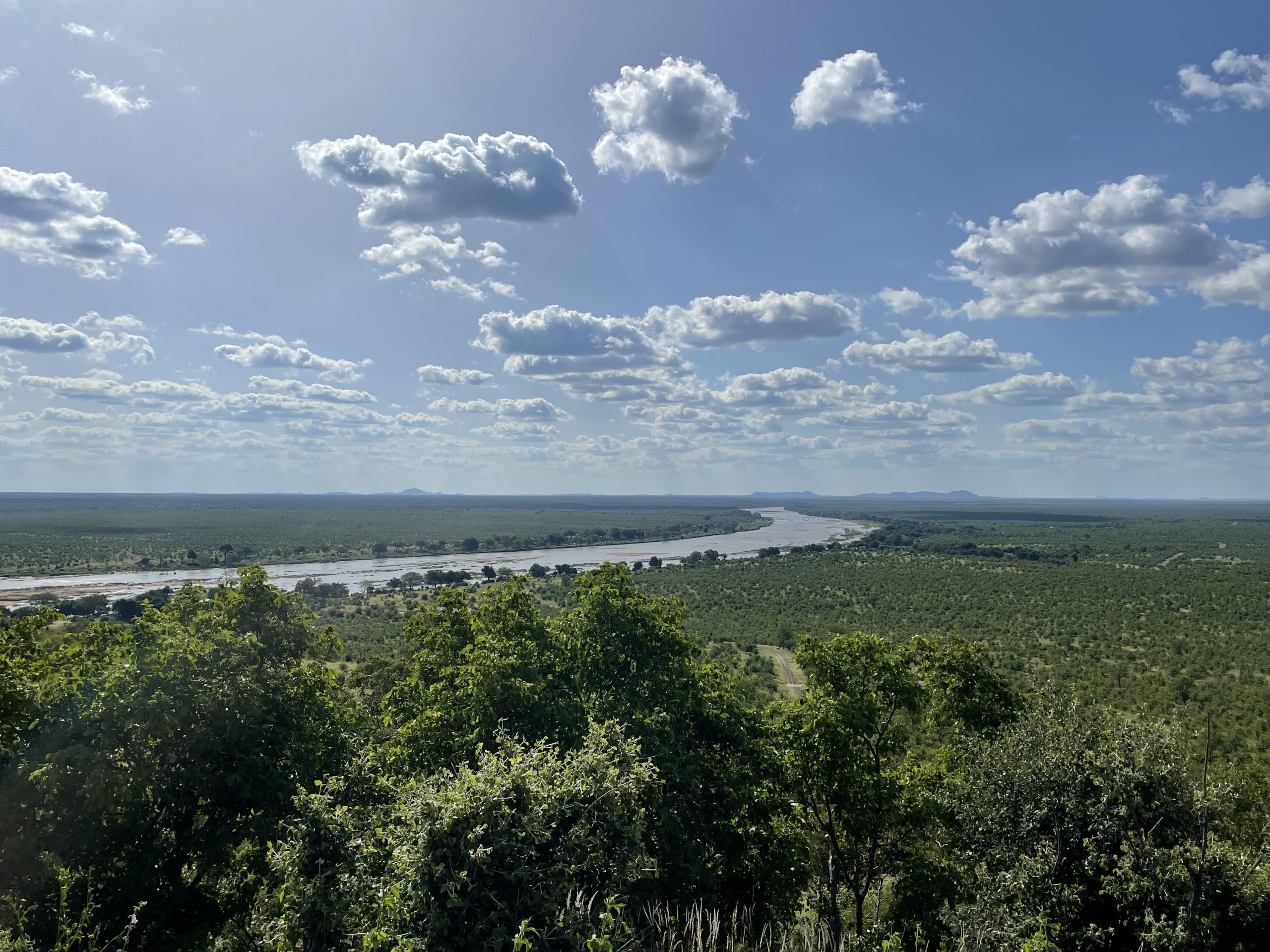
Written by: Ian Scoones
This blog is the third in a short series on conservation and development issues in Zimbabwe and was written by Ian Scoones and originally appeared on Zimbabweland.
What are the roles of protected areas in national development? Are parks national, even global, assets preserved for posterity and for protecting biodiversity, or are they part of a shared, local heritage, where nature and human use must be seen as integrated?
This debate is a long-running one, ever since the establishment of the first ‘national parks’ in the US. Today, it is rising up the agenda again, as advocates for a 30×30 commitment (protecting 30% of a country’s land area for conservation by 2030) gains traction in debates around the ongoing COP15 discussions on the post-2020 global framework on biodiversity to be concluded in Kunming in China later this year.
The rehabilitation of Gonarezhou national park
These were themes that were central to discussions during our recent visit to the southeast Lowveld in Zimbabwe, including a visit to Gonarezhou National Park at the kind invitation of Hugo van der Westhuizen, Director of the Gonarezhou Conservation Trust, which followed on from our recent exchange after my earlier blog. Thanks to financing through the Frankfurt Zoological Society from a number of philanthropic foundations, the park is undergoing a much-needed rehabilitation. After years of neglect, the basic infrastructure had declined and the management of what are crucially important ecosystems and biodiverse habitats had lapsed.
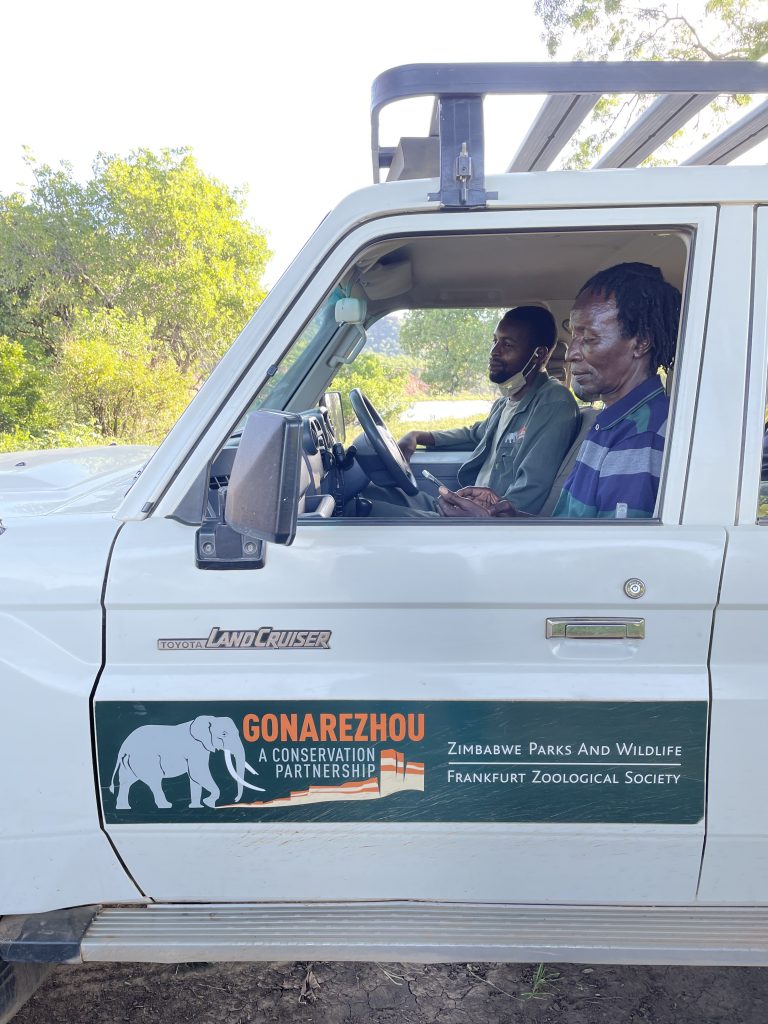
The Gonarezhou ConservationTrust is a joint venture between the government (through the Zimbabwe Parks and Wildlife Management Authority) and the FZS, based on a 20-year agreement from 2017 to manage the huge 5,000 km2 area. Already major changes have happened, including the recruitment and training of many armed guards and rangers, along with the improvement of roads, camping and lodge sites. Although currently the park is receiving significant amounts of external funding as a contribution to its US$3 million per annum running costs, the aim is to break even, boosting pre-COVID income of about $500m per annum through major tourist investments.
Central to the park strategy is the securing of the boundary, especially on the Zimbabwe side. The erection of an electrified veterinary fence along the whole border has been recently completed, together with the employment of guards to patrol. This investment has been facilitated by government, through the Department of Veterinary Services, although where the money originally came from remains obscure. Although the fence is aimed at stopping animals leaving the park and carrying disease to domestic herds outside, the fence is also part of the park strategy to contain animals and maintain a strong, secure boundary.
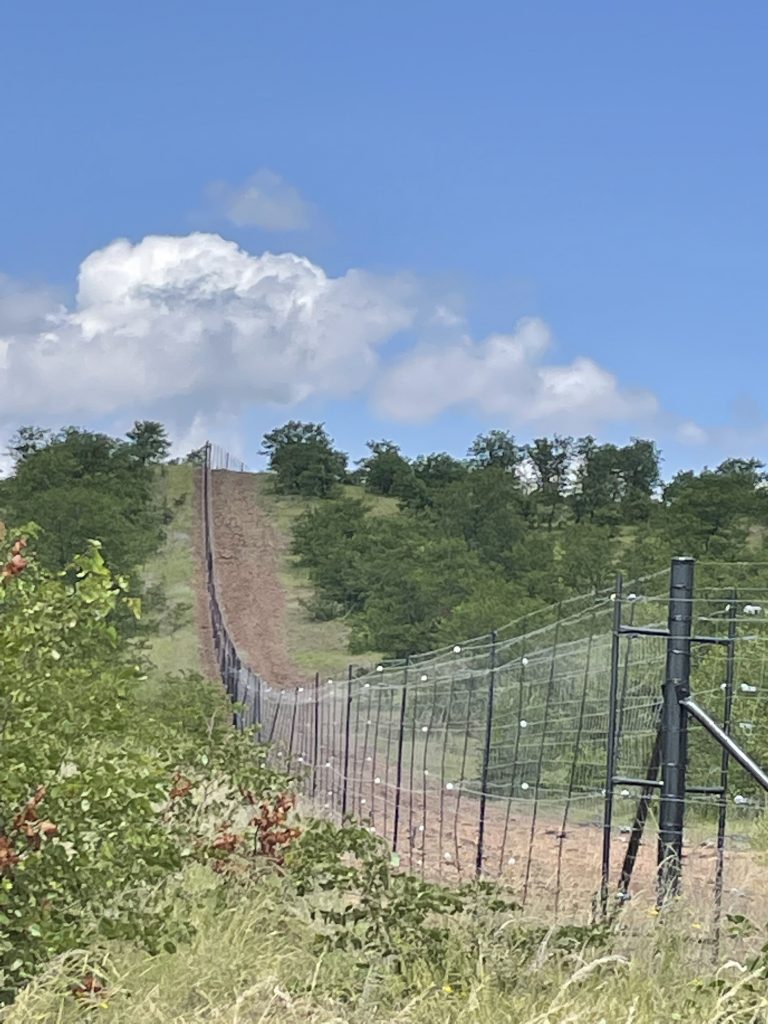
However, given that the area is endemic with Foot-and-Mouth and not part of an export zone where ‘disease freedom’ is required, the veterinary rationale for the fence is shaky to say the least (see an earlier blog on this theme). And, in any case, given that the fence is not continuous, as animals are allowed to move into hunting areas and can anyway move up rivers where the fence does not cross, buffaloes (the main FMD carrier) can easily move into the farming areas (and do).
Whatever the origins of the fence, it serves the park strategy well. As was explained to us, the aim is to reduce human-animal conflict (although see the previous blog on the ‘trouble with elephants’), as well as encourage more regulated use of park resources by local people, overturning what was seen as a dangerous free-for-all that existed before. Today groups are allowed in to cut grass and to collect non-timber forest products, but livestock are never allowed to graze inside the park boundary, no matter how bad the drought conditions. The aim then is to keep animals in and people out.
While Hugo and colleagues objected to the label of ‘fortress conservation’ in my previous blog, there are clearly many parallels. The increased militarisation of park defences is also a clear trend, again very similar to elsewhere. While from inside the park, it looks like there are assaults from all sides that must be defended against (poachers from Mozambique, villagers seeking grazing from the Zimbabwe side and so on), from the other side of the fence, it looks like a well-defended fortress, and a big change from the more flexible, negotiated (others would say simply unregulated) arrangement that existed before.
Community tensions
The result has been heightened tension with local communities, which have been responded to be a range of outreach and community liaison activities, as well as intensified policing and arrests. The community outreach activities are pursued genuinely and with considerable resources and are led by committed staff from the Trust. There are investments in local infrastructure (roads, a proposed bridge, school rehabilitation), as well as attempts to address human-wildlife conflict (including growing chilli to create ‘cakes’ that can be burned to repel elephants). There is also a commitment to wider dialogue, with platforms created in villages around the park boundary, where grievances can be aired and issues addressed by park officials.
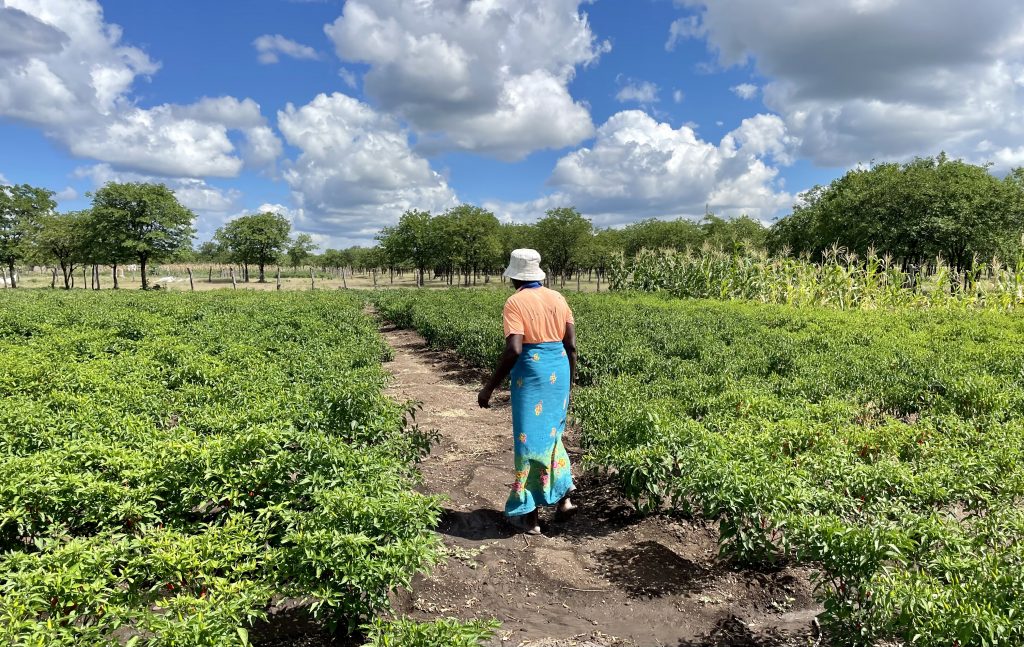
However, there remain problems, as we found when we talked with community members. There is a deep resentment around the change of access, especially for grazing, and multiple complaints that wildlife conflicts are getting worse not better. Many complain that the park does nothing about it. While this is not strictly true, the scale of the challenge is huge. The fence does restrict some animals, but elephants, in particular, don’t have much time for fences even electric ones, and regularly break through. None of the ‘projects’ offered by the park provide a genuine alternative to grazing. With increasing droughts and more pressure on land around the park, the need for relief grazing only gets bigger. While those with big herds (including absentees) are the most affected, it is the smaller livestock owner, who may have just a few cattle and goats, whose livelihoods are especially affected, as they depend on livestock provisioning through drought periods when crops fail.
While community outreach certainly helps open up channels of communication, the local liaison officers are at a bit of loss what to do, as they have no power to address the more fundamental questions around access to land (and crucially grass and water for animals). There is also a slightly naïve approach to ‘community’ involvement, with the assumption that co-opting some chiefs or headmen is sufficient. As was explained to us, sometimes the dialogue meetings are open fights as people rail against the park or – slightly bizarrely – against ‘Hugo’, as the dispute with the new park arrangement has become oddly personalised as if the Trust director owns the place!
The problem is that there are very divided views; different narratives about what the park and the wider landscape are for and the role of people in them. For some, parks are the last vestiges of the wild, natural world, where globally important habitats and species can be protected from human depredation. As part of a core strategy for protecting biodiversity, they are therefore globally important and central to a country’s national assets. Given their wider value as ‘global public goods’, they can also attract funds from outside, including interest from tourists and others able to pay for access. For others, by contrast, parks are part of a wider natural heritage, which has co-evolved together with humans. The landscape is one that has been part of people’s cultural histories, and where grave sites lie and spirits reside. These areas should be protected for use, but humans – through living with and from nature – are the natural guardians of it.
These views are not easy to resolve, although there is a growing recognition, including in on-going discussions about a post-2020 global framework for biodiversity, that the most protected areas for biodiversity are ones that used by ‘indigenous’ peoples and communities, and that management of ecosystems is always necessary for their protection (just look at what happens when ‘protected’, ‘endangered’ elephant populations explode; see the last blog).
Ways forward?
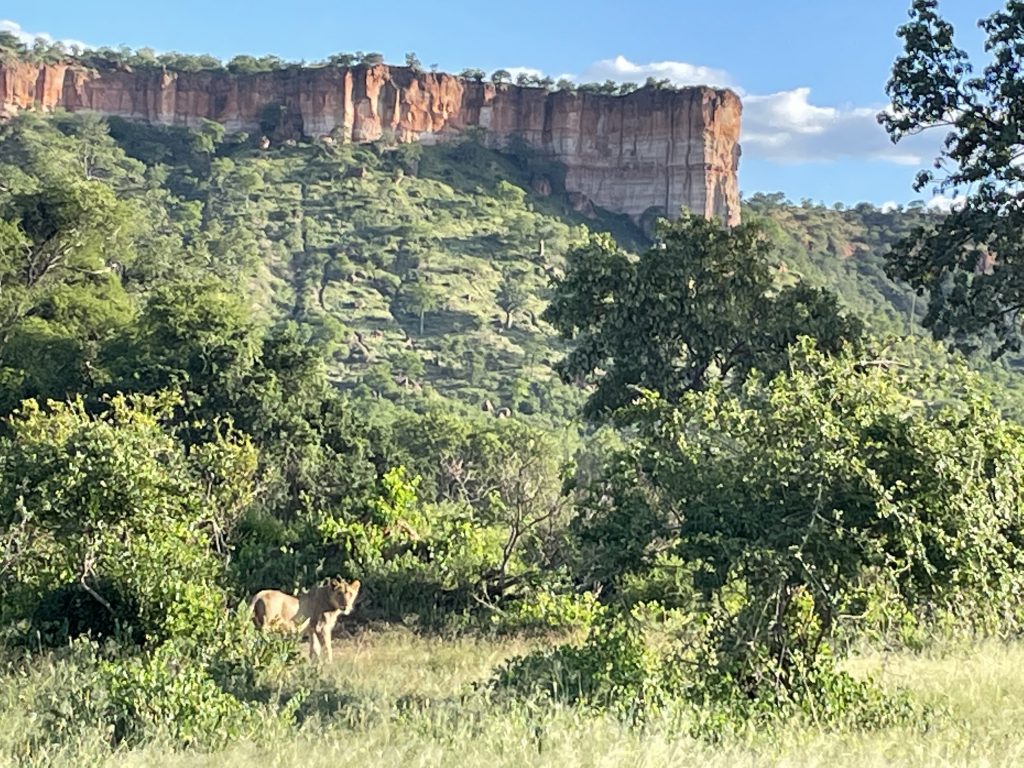
So, what are the ways forward? Clearly the investment in Gonarezhou is much needed and welcome, but has the Trust adopted the right strategy? Is conflict bubbling away and will it explode at some point? Can the separation of wild nature and people really be sustainable?
As we saw in our own study areas neighbouring the park, land is currently highly constrained – particularly better watered grazing and arable land at the end of a dry season or during a drought (as now). Tensions between wildlife and people will always focus on these ‘key resources’. This means shared use, within and outside the park boundaries is essential. People in the communities must find ways of allowing wildlife to co-exist in their areas, while parks managers must find ways of people using key resources in the park (in certain places, at certain times). It has to be a negotiated settlement, and one that benefits both (conflicting) objectives. Without this damaging conflict will persist.
Creating ‘alternative livelihoods’ in these areas is very difficult, and no matter how many high-end tourist lodges are built this is not going to provide for the vast majority. Such people are not going to be bought off with the odd gardening project or infrastructure investment, no matter how welcome these may be. They need to make a living from the land – and that means livestock grazing and farming. Using aid and philanthropic money to invest in a national park is justified because of its importance for biodiversity protection, but this argument is difficult to sustain if over the fence poverty and even starvation reigns.
Development must emerge in the round – people, wildlife, ecosystems all need to be part of the picture. The alternative to the siloed approach, where nature conservation is separated from wider development (and attracts the big bucks), is to accept that (no matter what fence is put up), boundaries are flexible. A park such as Gonarezhou is a national (even global) asset, but it is also a shared heritage, amongst all those who value this landscape; not least those who lived inside the park for many generations before its establishment less than 50 years ago.
There is a need for what some call an ‘inclusive’ or a ‘convivial’ approach to conservation: shared use, negotiated goals and so less conflictual and violent. In the wider landscape, this must mean biodiversity conservation of critical habitats and species; tourism to allow the widest group of people to enjoy and appreciate these historically and ecologically important areas; hunting, revenue generation and benefit sharing; and shared use of resources, particularly those key resources vital for agricultural and pastoral livelihoods, as well as wildlife. Fences, guns and guards are not the solution, and may even make matters worse.
